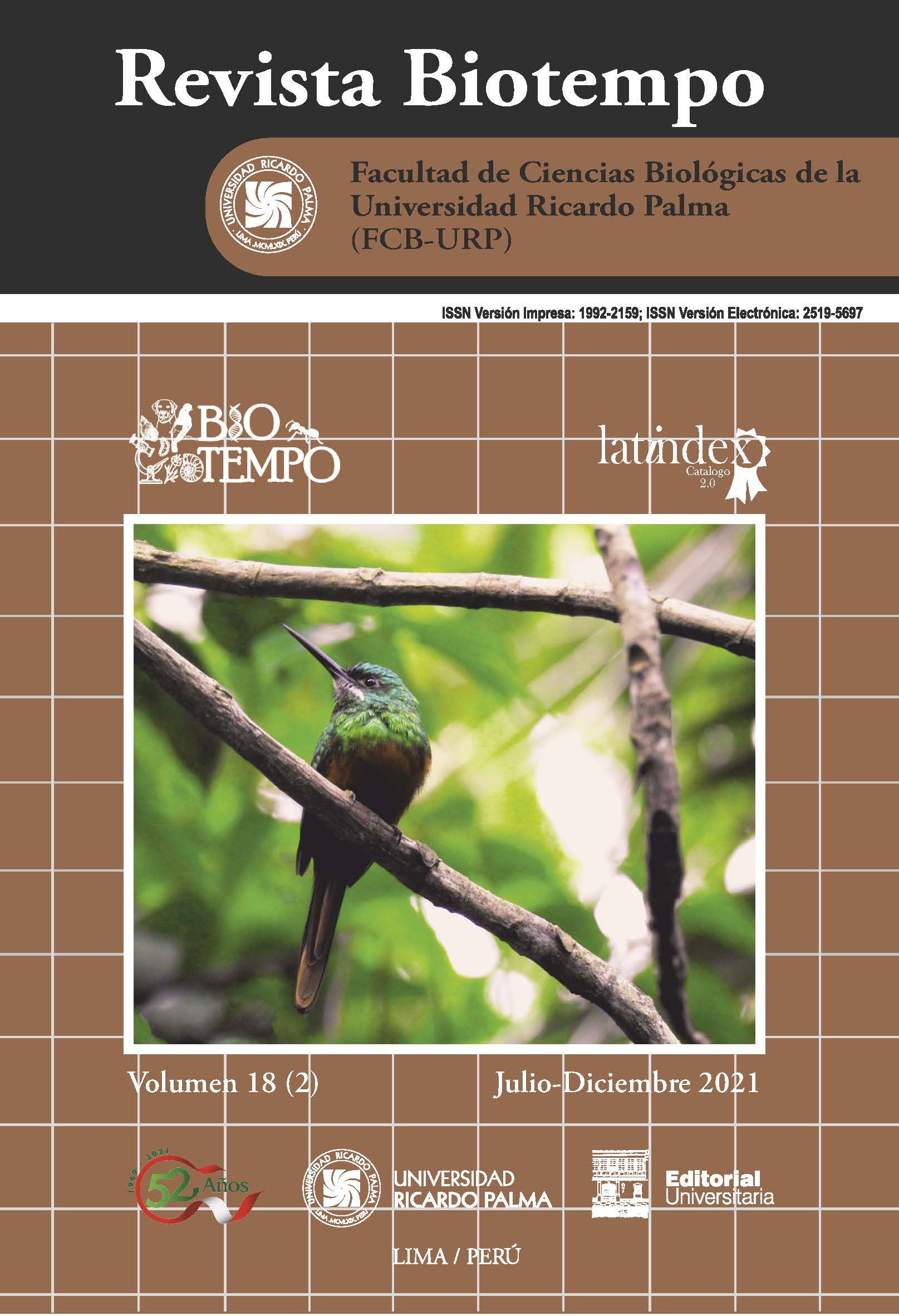METHANIZATION OF THE RESIDUAL BIOMASS OF TWO VARIETIES OF COCOA AND NUTRITIONAL CHARACTERIZATION OF THE BIODIGESTED SUBSTRATE
DOI:
https://doi.org/10.31381/biotempo.v18i2.4318Keywords:
anaerobic digestion, biofertilizer, methane, Theobroma cacaoAbstract
Anaerobic digestion enables the degradation of the biodegradable organic fraction present in solid waste, transforming it into biogas with high methane content and high energy use, and a fi nal residue with a high rate of destruction of pathogenic microorganisms which meets the conditions to be used as a soil improver and biofertilizer. In this context, the production of biogas and methane gas from the anaerobic digestion of two varieties of cocoa (CCN-51 and Nacional) was evaluated and the obtained substrate was nutritionally characterized. Th e following treatments were studied: T1 Shell CCN-51 (20% ST); T2 Shell CCN-51 (30% ST); T3 Slime CCN-51; T4 Shell CCN-51 + Slime CCN-51 (20% ST); T5 Shell CCN-51 + Slime CCN-51 (30% ST), T6 Shell Nacional (20% ST); T7 Shell de Nacional (30% ST); T8 Slime Nacional; T9 Shell de Nacional + Slime Nacional (20% ST); T10 Shell Nacional + Slime Nacional (30% ST); T11 Shell CCN-51 + Shell Nacional (20% ST); and T12 Shell CCN-51 + Shell from Nacional (30% ST). Biogas production was determined daily, and methane gas was also measured with the Orsat method. Physicochemical parameters of the biodigested substrates were analyzed. Th e T6 Shell Nacional (20% ST) was the most outstanding in the production of accumulated biogas (1297.66 mL) and in the percentage of methane gas (76%). Diff erent concentrations of macro and micronutrients were found in the biodigested biomass of the diff erent treatments, with potential for use as a biofertilizer in plants.










